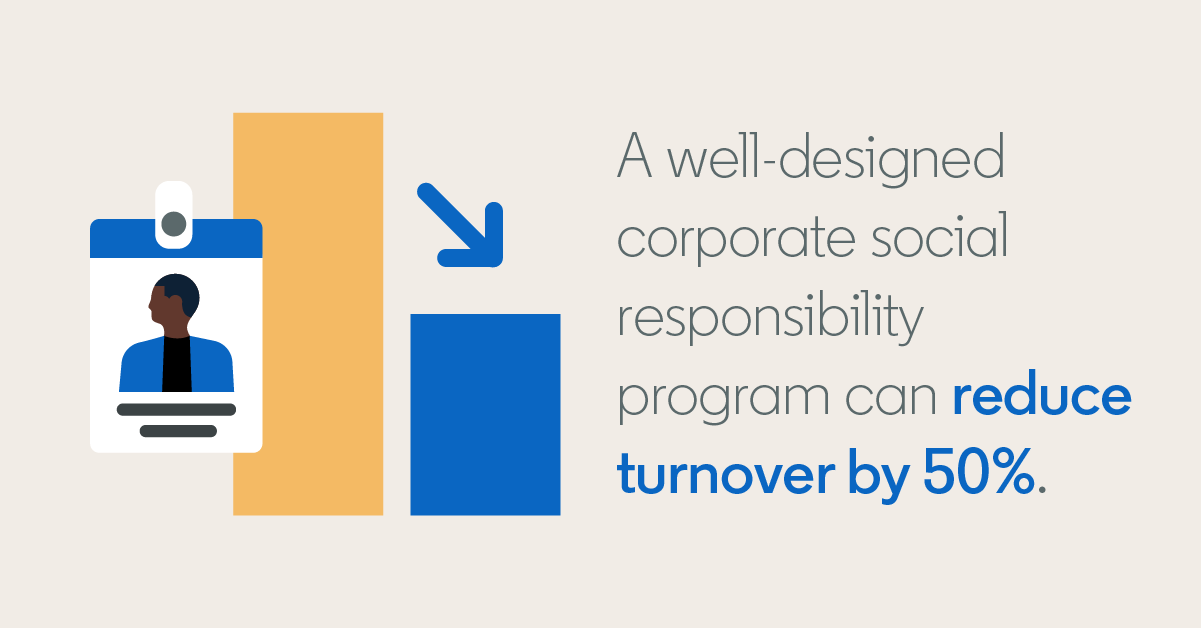
Why Nonprofits Should Encourage More Corporate Executives to Get Involved with Their Cause
When people think about volunteers, the first image that comes to mind may be students building houses during their gap year or neighbors delivering care packages to vulnerable members of their community—not corporate executives with their sleeves rolled up. However, the corporate world presents a significant and largely untapped opportunity for nonprofits to secure the resources and support they need to drive impact, while offering a rewarding experience to leaders and the companies they represent.
As LinkedIn’s Talent Solutions Director for Canada and LinkedIn for Nonprofits, I’m fortunate that my job helps deliver positive change in many people’s working lives every day by connecting the right talent to the right opportunities. But throughout my career in the corporate world, it hasn’t always been that way. When you’re focused strictly on business objectives day in and day out, it’s possible to lose touch with the very people your company was created to serve. That’s one of the reasons that I became interested in volunteering in the first place: to reconnect with the wider community, pay it forward, and make my work feel more grounded and meaningful. LinkedIn employees volunteer their time through the LinkedIn Coaches program, providing virtual career advice and mentoring to thousands of job seekers globally, and I’m proud to be a small part of that.
Reaching out to executives and asking them to get involved with your cause might seem like a daunting task, especially if you’ve never met or interacted with them before. But as someone who has been on the other side of those messages, I can tell you that they’re worth sending—because those opportunities are truly mutually beneficial. The trick is knowing how to convey that.
To help you get started, here are some tips for crafting the right message—and getting noticed.
Doing good is good for business
A big part of any nonprofit outreach message is a spotlight on your mission and the many ways that a person’s support can help you make a bigger impact. While this should absolutely be part of your initial messaging, it’s also worth highlighting the ways that their support can impact their company.
Simply put, doing good is good for a business. It shows that the company cares about the community—and consumers are paying attention. In a study of 20,000 adults across five countries, Unilever found that a third (33%) of respondents actively choose to buy from brands they believe are doing social or environmental good. That means that when companies work with nonprofits, they’re likely to get back as much as they give, if not more.
Doing good is good for company culture

Increased customer interest and loyalty are only a few of the benefits companies can gain from nonprofit partnerships. The impact that philanthropy can have on company culture should not be overlooked.
When a leader gets directly involved in philanthropic work, they demonstrate their personal commitment to making a difference. This can inspire and motivate employees—and improve their perception of the company’s leadership as a whole. And when staff can get involved right along with them, engagement and productivity can soar.
Research shows that a well-designed corporate social responsibility program can increase employee engagement by 7.5%, boost productivity by 13%, and reduce turnover by 50%. Employees are happiest when they feel a sense of purpose at work, and partnering with nonprofits is a great way to give them that. For people who sit at a desk all day, corporate volunteering opportunities can also provide an opportunity to work with their hands, which can be a welcome change that makes their days more varied and interesting.
Connections are powerful
Weaving these benefits into your messages to executives can help you get their attention. Here are a few other tips to help you make your initial message stand out:
- Keep it short and to the point. If their inbox is overflowing, executives will appreciate your brevity. Plus, you can always share more details later—the goal is to get the conversation started.
- Look for a personal connection. If the executive has expressed an interest in your cause on their LinkedIn profile or elsewhere, reference it when you reach out to let them know why it’s a good match. Proactively identifying people who have these connections can increase the likelihood of a response.
- Provide options. Are there different ways that the executive or their company can support your nonprofit? Mention a few options and encourage them to engage in a dialogue. In doing so, you leave less room for doubt to creep in about whether they have time or can make a big commitment, since there are always other options on the table.
- Look for a warm introduction. If an existing or former employee, volunteer, or board member has a connection to the executive you want to reach, ask them if they can make the introduction. That, you’re immediately starting from a place of trust, giving you a head start.
At LinkedIn, we firmly believe in the power of connections to change the world. LinkedIn Sales Navigator allows nonprofits to rapidly map their network, identify the right people to talk to, and find a warm introduction—and we’re always looking for new ways to help organizations build their networks.
We want to hear from you. Is there something more we could be doing to support your networking efforts? Visit our microsite and talk to our team. Your thoughts can help us provide more tailored support to the nonprofit community—so you can do even more good in the world.

